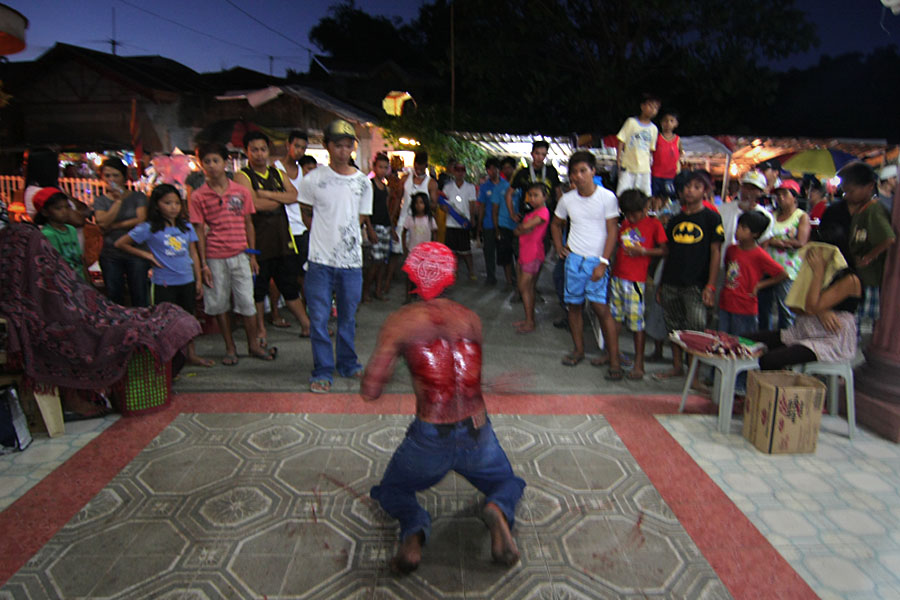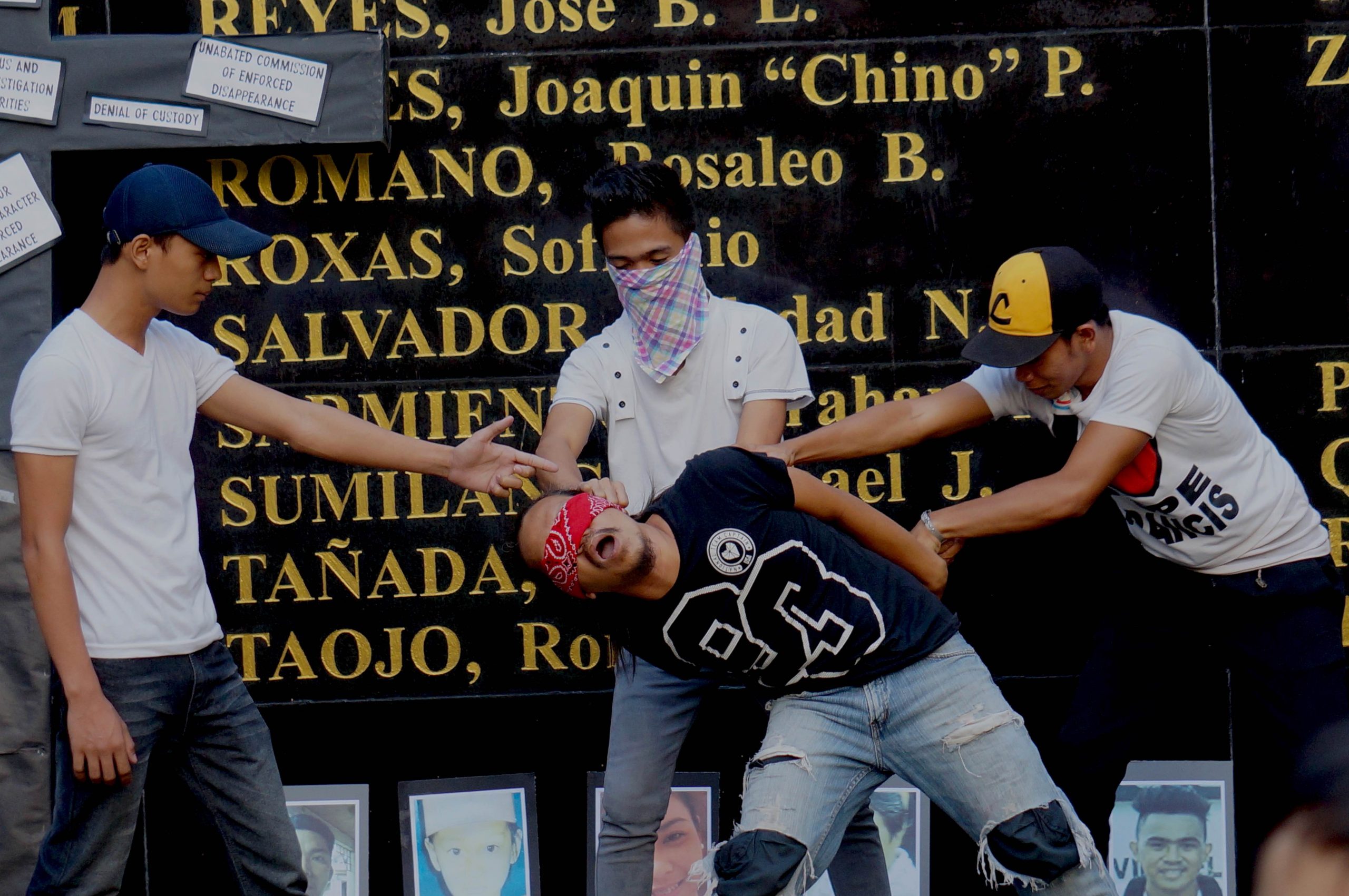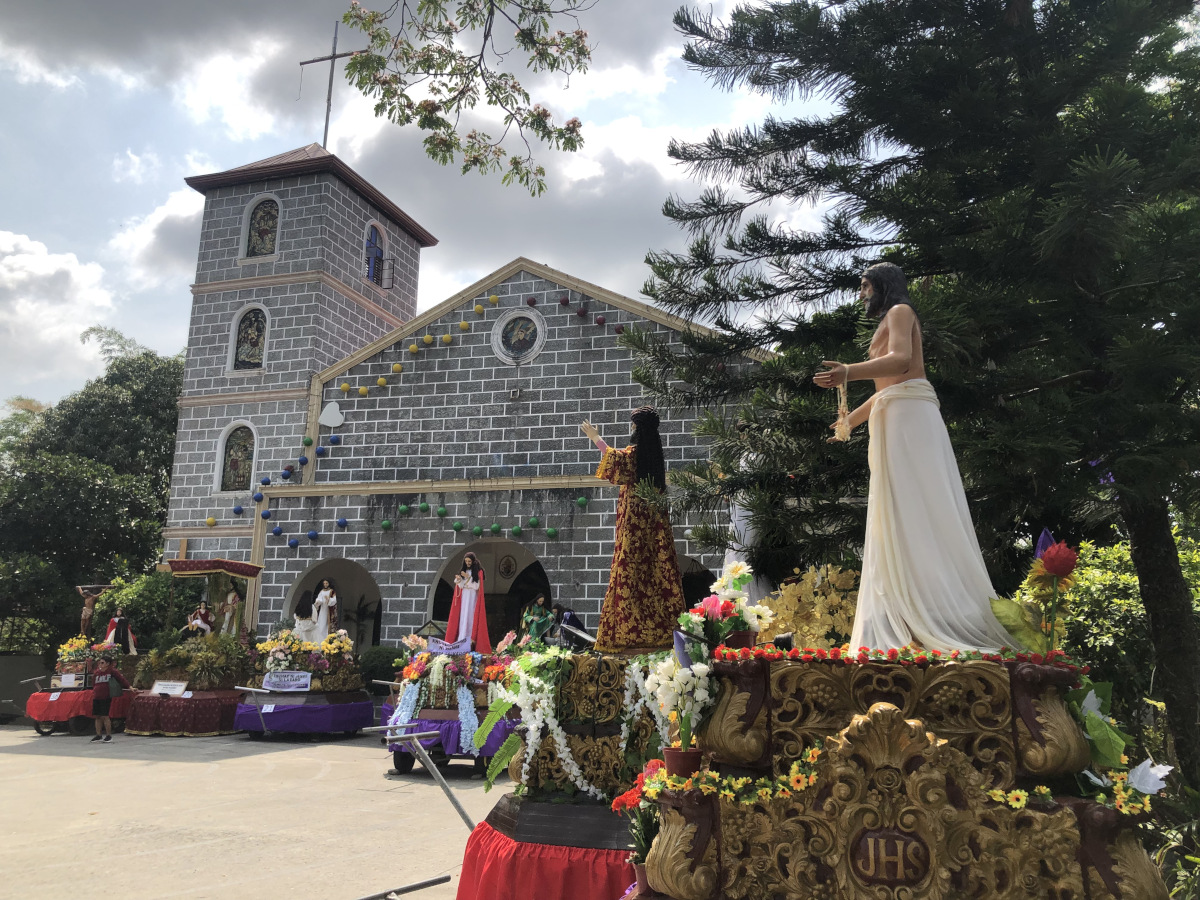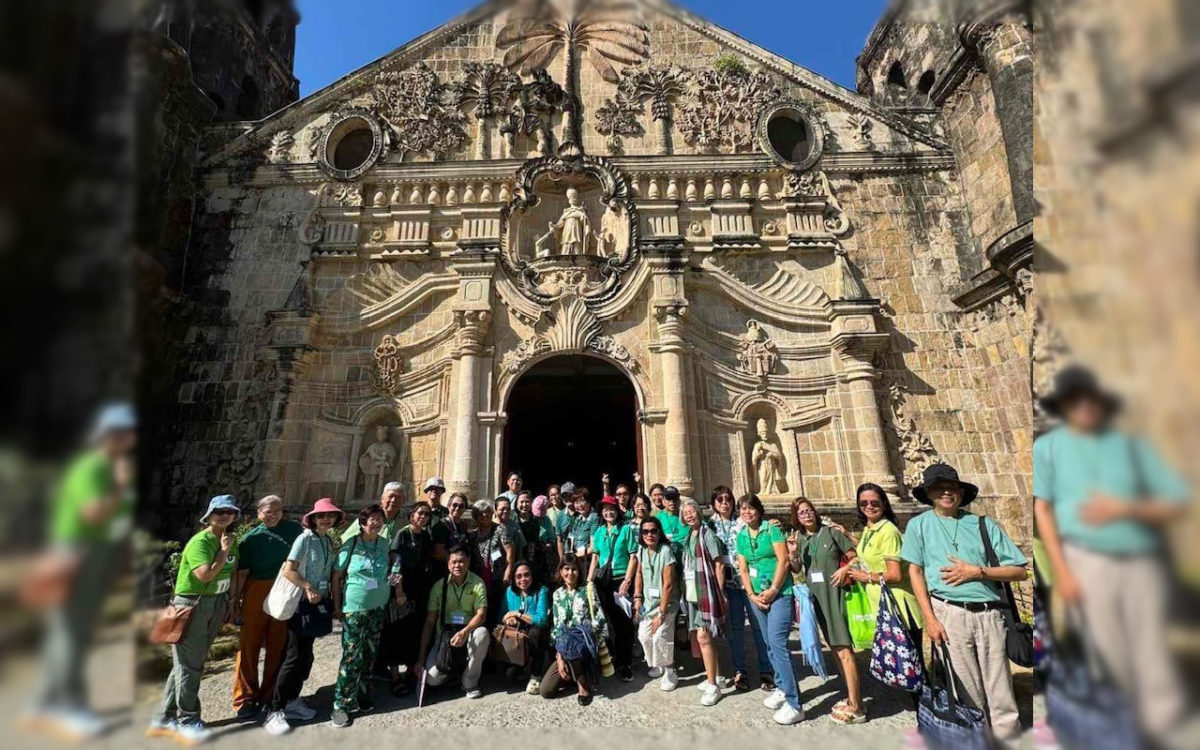Text and slideshow by VINCENT GO
PAOMBONG, Bulacan—Thousands of tourist and spectators have once again flocked to the quiet village of Kapitangan in this town, 47 kilometers north of Metro Manila, to witness the bloody spectacle of flagellation and crucifixion that plays out here each year.
Penitents lashed their backs using whips with wooden flails splattering onlookers with their blood.
Included in the cast of characters of this annual spectacle are the “mananataks (markers),” men who position themselves somewhere along the proverbial Calvary, waiting to cut the wounds at the penitents’ backs to let the blood flow out.
As penitents whip their backs swollen, the mananataks mark them using a small wooden paddle with blades inserted into it, leaving a scar that brands the flagellants.
One of those mananataks is 59-year-old Pedro de Leon, driven by a childhood ailment to the flagellation. For more than three decades he, too, whipped himself every Good Friday, until nine years ago when he decided to join the ranks of the manantaks to keep alive the tradition of marking.
Meantime, this yearly ritual has turned Kapitangan into a haven for hawkers. About a half kilometer stretch of narrow road leading into this quiet village is lined with a variety of stalls selling assorted goods and merchandise.
Visitors can find everything from food, refreshments, kitchenware, hardware supply, DVDs, clothing, shoes, parking spaces, toiletries, trying to cash in on this occasion.
Traders come from nearby towns or as far as Metro Manila, with some shelling out as much as P1,500.00 each day for a spot on a vacant lot just to sell their goods, yelling and playing loud music to catch a potential customer’s attention, and turning the atmosphere festive rather than solemn.



